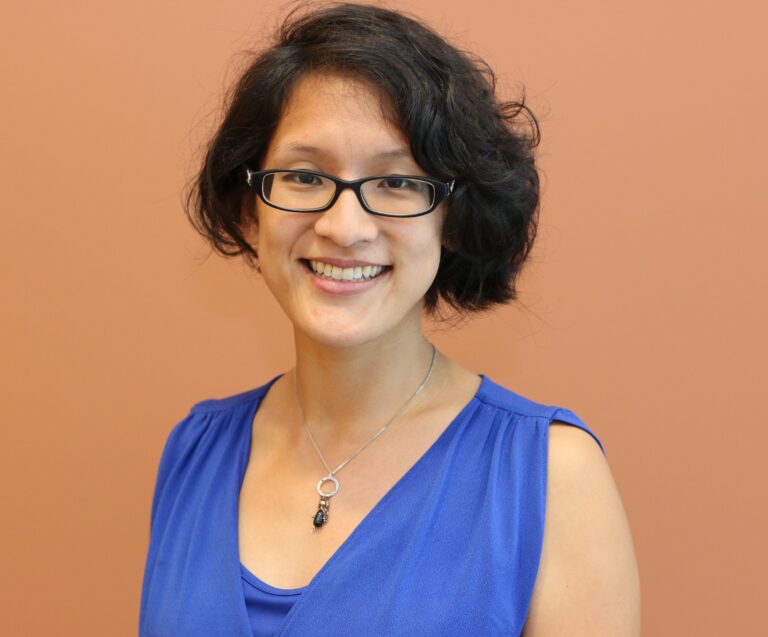Why Develop an Intercultural Teaching Practice?
Blog post adapted from: Page, C. (2021). Foundations of Intercultural Teaching. Kwantlen Polytechnic University.
Responding to the rapid changes in teaching and learning during COVID-19 times has consumed much of our energy as educators. We have adapted to new methods of creating and delivering content and have searched out new ways to ensure active and connected learning for our students online. With these many shifts, attending to other priorities may feel overwhelming.
In our shifting context, we find ourselves positioned in culturally diverse classrooms, seeking to respond to learners who may be geographically distant, and perhaps unfamiliar with the Canadian classroom. In our current moment, how can developing an intercultural teaching practice enhance the experience of online teaching?
Searching for Sustainability
Major changes in our teaching environments can leave us disconnected from the higher goals and values that brought us to teaching. Exploring intercultural teaching provides an opportunity to consider what sustainable and healthy teaching practices look like for ourselves and for our students.
Our search for sustainable practice takes place in the context of Canadian government priorities for internationalization that position Canada as a destination for incoming international students, encourage outbound student mobility, and emphasize fostering global partnerships (Department of Foreign Affairs, Trade, and Development (DFATD), 2014; Government of Canada, 2019). These policies have resulted in an increasing focus on internationalization, which is defined by Knight (2015), as “the process of integrating an international, intercultural, or global dimension into the purpose, functions, or delivery of postsecondary education” (p. 2). The process of internationalization can create additional strains, but it can also unfold in ways that bring new life and energy into teaching and learning.
The Association of Canadian Deans of Education (2016) developed an Accord on the Internationalization of Higher Education that provides a vision for sustainable internationalization practice. The Accord calls for Canadian institutions to practice internationalization in ways that foster healthy relationships between all stakeholders, promote social justice and equity, and encourage reciprocity and intercultural engagement. These sustainability goals are fostered by thoughtful intercultural teaching practices.
Who Benefits from Intercultural Teaching?
- International students: At the end of 2019, 498,735 international students were studying at postsecondary institutions in Canada (CBIE, 2020). These students, while often highly successful in their previous learning contexts, may struggle as they encounter new academic contexts where the expectations of how to learn remain implicit (Blasco, 2015). Additionally, these students are often viewed through a deficit lens, which positions them as lacking core abilities needed for success (Killick, 2018; Ryan, 2005), and they may experience racist treatment by faculty or other students (Stein & Andreotti, 2016).
- “Internationally-educated” domestic students: In addition to students who study on student visas, and who are therefore formally classified as international students, we find significant numbers of other internationally-educated students in our classes. This student group includes refugee-background students, and students who come to Canada through other immigration pathways and later pursue further education in Canada. These students may be overlooked, as they do not typically receive special services for international students. Yet, they are studying in the Canadian education system for the first time and may experience similar challenges to international students.
- Generation “1.5” students: In addition to our growing international student population, new Canadians add to the linguistic and cultural diversity in our classrooms. For example, in the 2018-2019 academic year, 195 languages were spoken by Surrey School District students (with Punjabi, Tagalog, Mandarin, Hindi, and Arabic as the five largest language communities represented). These students arrived in Canada during their childhood or adolescent years, attending Canadian schools while receiving ESL support. While these students access postsecondary education at high rates and persist through to degree completion, they may also receive lower GPAs, partly as a result of their status as English language learners (Roessingh and Douglas, 2012). This hinders their opportunities to pursue graduate education.
- Indigenous students: While over half of Indigenous people between the ages of 25-64 in Canada have obtained a postsecondary qualification, a persistent attainment gap of 22% between Indigenous and non-Indigenous students remains (Assembly of First Nations, 2018). Indigenous student success is hindered by a lack of respect for culture, a lack of reciprocity, and a failure to create learning environments relevant to the needs and goals of Indigenous learners (Kirkness & Barnhardt, 2001). Student success is enhanced by learning environments where strong personal relationships between faculty and Indigenous students are developed (Gallop & Bastien, 2016).
- Domestic students: Employers are increasingly asking for graduates with well-developed social and emotional skills; this skillset includes the ability to work effectively in intercultural contexts and with culturally diverse teams (McKean, 2018). In many classrooms, however, the deep interaction between domestic and international students that promotes the development of interculturality is missing. This interaction can be supported through the structured classroom teaching initiatives that take place within the larger scope of intercultural teaching (Arkoudis et al., 2013). Additionally, the shifts towards inclusive pedagogies that occur within intercultural teaching serve to benefit all students, not only those from non-dominant cultures (Ryan & Caroll, 2005).
- Our students’ communities: Our students’ families and broader communities are often key stakeholders in their academic success (Sleeter, 1996). Students may pursue higher education with the explicit intention of benefitting their family or larger community, and so successful outcomes of intercultural teaching practice have benefits that extend beyond the individual student.
- Our own selves and teaching practices: Intercultural teaching practice creates opportunities to develop greater understanding of our cultural selves, and to challenge previous assumptions about our disciplines and ways of teaching and learning. While this exploration can initially feel daunting, it can also lead to the discovery of new practices that enhance teaching and open new possibilities. This journey can lead to fresh practices that reconnect us with the broader hopes, goals, and possibilities we hold for our teaching.
The intercultural teaching journey is best done in companionship with others, who can provide a safe place to learn and ongoing support. At KPU, the Intercultural Teaching Program aims to build this supportive community of practice. The first module of the program is offered during Reading Week through a blend of synchronous sessions and self-paced learning.
Is this your time to start an intercultural teaching journey? Curious to find out more about what that might mean? Please reach out for a conversation or consultation.
References
Arkoudis, S., Watty, K., Baik, C., Yu, X., Borland, H., Chang, S., Lang, I., Lang, J., & Pearce, A. (2013). Finding common ground: enhancing interaction between domestic and international students in higher education. Teaching in Higher Education, 18(3), 222–235. https://doi.org/10.1080/13562517.2012.719156
Association of Canadian Deans of Education. (2016). Accord on the internationalization of education. https://csse-scee.ca/acde/wp-content/uploads/sites/7/2017/08/Accord-on-the-Internationalization-of-Education.pdf
Assembly of First Nations. (2018). First Nations Postsecondary Education Fact Sheet. Assembly of First Nations. http://www.afn.ca/wp-content/uploads/2018/07/PSE_Fact_Sheet_ENG.pdf
Blasco, M. (2015). Making the tacit explicit: rethinking culturally inclusive pedagogy in international student academic adaptation. Pedagogy, Culture & Society, 23(1), 85–106. https://doi.org/10.1080/14681366.2014.922120
CBIE. (2020, February 21). International students in Canada continue to grow in 2019. Canadian Bureau for International Education. https://cbie.ca/international-students-in-canada-continue-to-grow-in-2019/
Department of Foreign Affairs, Trade, and Development (DFATD). (2014). Canada’s international education strategy: Harnessing our knowledge advantage to drive innovation and prosperty. Government of Canada. https://www.international.gc.ca/education/assets/pdfs/overview-apercu-eng.pdf
Gallop, C. J., & Bastien, N. (2016). Supporting success: Aboriginal students in higher education. Canadian Journal of Higher Education, 46(2), 206–224. https://journals.sfu.ca/cjhe/index.php/cjhe/article/download/184772/pdf/
Government of Canada. (2019). Building on success: International education strategy 2019-2024. https://www.international.gc.ca/education/strategy-2019-2024-strategie.aspx?lang=eng
Killick, D. (2018). Developing intercultural practice: academic development in a multicultural and globalizing world. http://www.myilibrary.com?id=1032840
Kirkness, V. J., & Barnhardt, R. (2001). First Nations and higher education: The four Rs – respect, relevance, reciprocity, responsibility. In R. Hayoe & J. Pan (Eds.), Knowledge across cultures: A contribution to dialogue among civilizations. Comparative Education Research Centre, The University of Hong Kong. http://www.ankn.uaf.edu/IEW/winhec/FourRs2ndEd.html.
Knight, J. (2015). Updated definition of internationalization. International Higher Education, 33. https://doi.org/10.6017/ihe.2003.33.7391
McKean, M. (2018). Are Canada’s business schools teaching social and emotional skills? Conference Board of Canada. https://www.conferenceboard.ca/docs/default-source/education/9999_bschools-rpt.pdf
Roessingh, H., & Douglas, S. R. (2012). Educational outcomes of English language learners at university. The Canadian Journal of Higher Education, 42(1), 80–97. http://journals.sfu.ca/cjhe/index.php/cjhe/article/view/182449/182509
Ryan, J. (2005). Improving teaching and learning practices for international students: implications for curriculum, pedagogy and assessment. In J. Carroll & J. Ryan (Eds.), Teaching international students: improving learning for all (ebook). Routledge. https://ebookcentral.proquest.com
Ryan, J., & Carroll, J. (2005). “Canaries in the coalmine”: International students in Western universities. In J. Carroll & J. Ryan (Eds.), Teaching international students: improving learning for all (ebook, pp. 3–10). Routledge. https://ebookcentral.proquest.com
Sleeter, C. E. (1996). Multicultural education as social activism. SUNY Press; eBook Collection (EBSCOhost). https://ezproxy.kpu.ca:2443/login?url=https://search.ebscohost.com/login.aspx?direct=true&db=nlebk&AN=5285&site=ehost-live&scope=site
Stein, S., & Andreotti, V. O. (2016). Cash, competition, or charity: international students and the global imaginary. Higher Education, 72(2), 225–239. https://doi.org/10.1007/s10734-015-9949-8
Surrey School District. (2018). Surrey schools fact sheet. Retrieved from https://www.surreyschools.ca/ ParentServices/ParentInfoBrochures/Documents/Surrey%20Schools%20Fact%20Sheet.pd
Christina supports faculty in their journey of understanding and enriching learning for culturally diverse students, while aiming to facilitate a more joyful intercultural teaching experience. In addition to her work in the Teaching and Learning Commons, her KPU Learning Strategist role allows her to see the learning process from the student side and to integrate her understanding of both faculty and student perspectives. Her educational background includes applied linguistics and educational studies, and her roles have included ESL instructor, literacy consultant, researcher, and adult educator in both Canadian and international contexts. Christina facilitates workshops, connects faculty with relevant resources, and is available for individual consultations.




